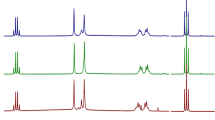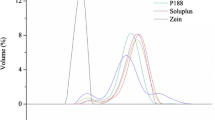Abstract
Losartan, an antihypertensive agent in clinical development, was found to exist in two enantiotropic polymorphic forms, a low-temperature stable form (Form I) and a high-temperature stable form (Form II), the temperatures at which they are stable being related to the transition temperature. X-ray powder diffraction patterns indicated differences in the crystal packing of the two forms. The vibrational data from infrared and Raman spectroscopy suggested a subtle change in molecular conformation and crystal packing in the two forms. Solid-state 13C NMR data of the polymorphs concurred with the vibrational data and indicated that, while the observed line widths reflect no major changes in crystallinity, signal multiplicities and chemical shifts do reflect differences in molecular packing in the respective unit cells. Thus, in the absence of crystal-lographic data, useful structural information could be derived from spectroscopic results to identify each of the crystalline forms.
Similar content being viewed by others
REFERENCES
J. C. Decius and R. M. Hexter. Molecular Vibrations in Crystals, McGraw-Hill, New York, 1977.
H. Y. Aboul-Enein. Applications of solid-state nuclear magnetic resonance spectroscopy to pharmaceutical research. Spectroscopy 5(3):32 (1990).
A. Pines, M. G. Gibby, and J. S. Waugh. Proton-enhanced NMR of dilute spins in solids. J. Chem. Phys. 59:569–590 (1973).
E. R. Andrew, A. Bradbury, and R. G. Eades. Removal of dipolar broadening of nuclear magnetic resonance spectra of solids by specimen rotation. Nature (Lond.) 183:1802–1803 (1959).
S. R. Byrn, B. Tobias, D. Kessler, J. Frye, P. Sutton, P. Saindon, and J. Kozlowski. Relationship between solid state NMR spectra and crystal structure of polymorphs and solvates of drugs. Trans. Am. Crystallogr. Assoc. 24:41–54 (1989).
D. Lin-Vien, N. B. Colthup, W. G. Fateley, and J. G. Grasselli. The Handbook of Infrared and Raman Characteristic Frequencies of Organic Molecules, Academic Press, New York, 1991.
S. J. Opella, J. G. Hexem, M. H. Frey, and T. A. Cross. Solid state NMR of biopolymers. Phil. Trans. R. Soc. Lond. A 299:665–683 (1981).
E. M. Menger and W. S. Veeman. Quadrupole effects in high-resolution phosphorus-31 solid-state NMR spectra of triphenylphosphine copper (I) complexes. J. Magn. Reson. 46:257–268 (1982).
Author information
Authors and Affiliations
Rights and permissions
About this article
Cite this article
Raghavan, K., Dwivedi, A., Campbell Jr, G.C. et al. A Spectroscopic Investigation of Losartan Polymorphs. Pharm Res 10, 900–904 (1993). https://doi.org/10.1023/A:1018973530443
Issue Date:
DOI: https://doi.org/10.1023/A:1018973530443




